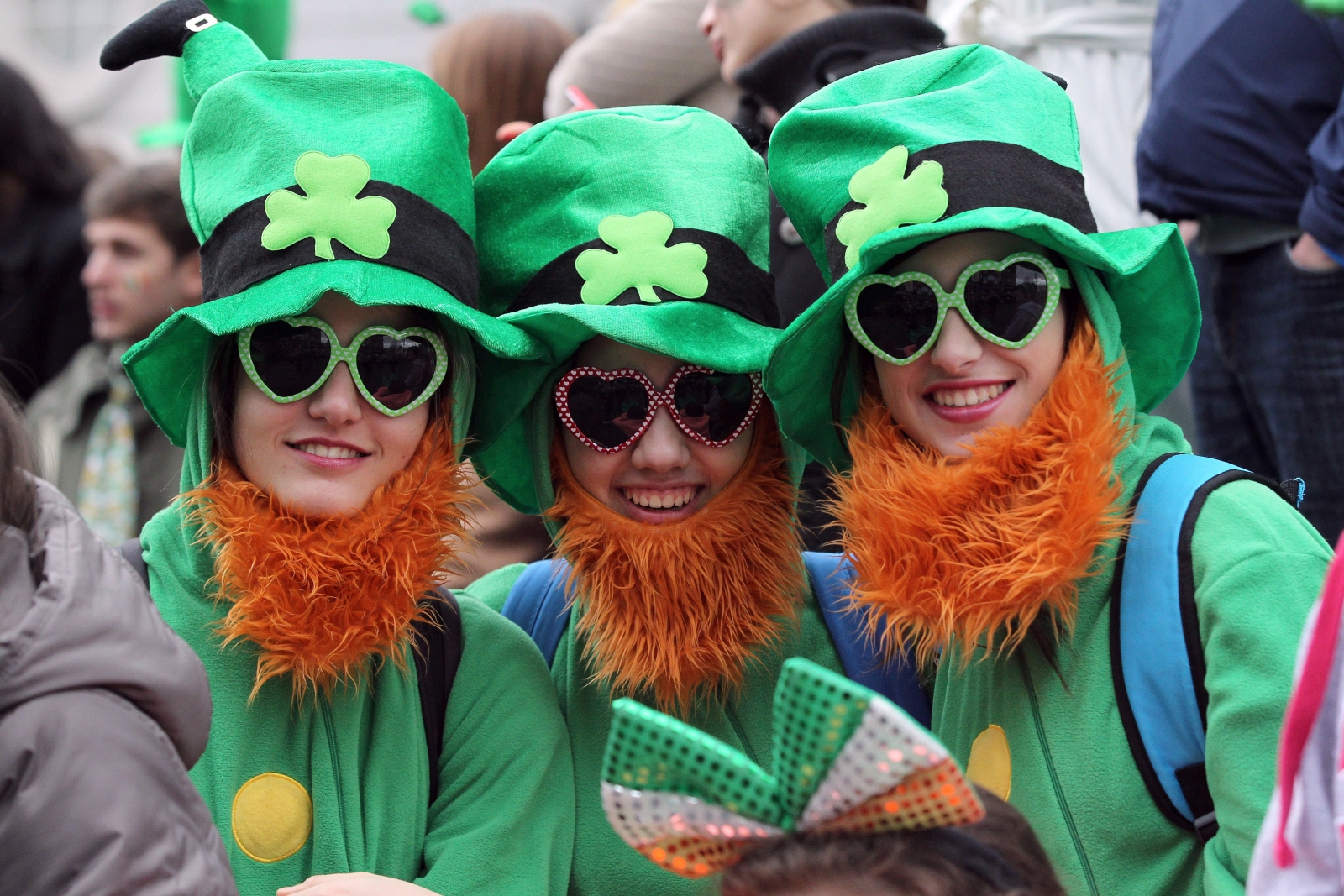Gallery
Photos from events, contest for the best costume, videos from master classes.
 |  |
 | |
 |  |
 |  |
 |  |
 |
St. Patrick’s Day, held on March 17th, is a celebration steeped in history, culture and festivities that attracts people from all walks of life to join in the magic of Irish culture. From the dazzling parades in cities across the globe, shamrocks, dancing and wearing green, this holiday symbolizes more than just a day of revelry; it embodies St. Patrick’s Day: History, Traditions & Fun Facts St. Patrick’s Day is one of the most widely celebrated cultural and religious holidays around the world. What started as a solemn feast day in honor of Ireland’s patron saint has transformed into a global festival filled with parades, music, dancing, and a whole lot of green. Let’s dive into 10 fun St. Patrick’s Day facts that might surprise you—and maybe spark some new traditions in your own community! 1. St. Patrick Wasn’t Actually Irish. Believe it or not, the iconic St. Patrick wasn’t born in Ireland! He was born in Britain around the late 4th century. St. Saint Patrick’s Day, celebrated every year on March 17th, is a cultural and religious holiday commemorating Saint Patrick, the patron saint of Ireland. The day marks the death of St. Patrick and the arrival of Christianity in Ireland. How St. Patrick’s Day Became a Holiday. St. Patrick’s Day began as a religious feast day in Ireland during the 9th or 10th century, celebrated by church services and feasting. In 1631, the Catholic Church officially recognized March 17 as a feast day in St. Patrick’s honor. Why Do People Love St. Patrick’s Day? So, why do we love this day so much? It’s simple: St. Patrick’s Day brings people together! Whether you’re Irish or just love the fun, it’s a chance to wear green, eat good food, and laugh with friends. It’s about remembering St. Patrick’s big heart and celebrating a culture that’s full of life. St. Patrick's Day's spiritual meaning is rooted in Christianity. At its core, St. Patrick's Day is a religious holiday celebrated by Catholic, Lutheran, Anglican, and Eastern Orthodox Christians.. The man who inspired the holiday, Saint Patrick, is best known for bringing Christianity to Ireland in the 5th century. St. Patrick’s Day is celebrated on March 17 each year, honoring the patron saint of Ireland. This lively holiday has transformed from a religious observance into a global festival filled with parades, music, and traditional Irish dishes. St. Patrick’s Day, celebrated on March 17 each year, is known for its parades, shamrocks, and a whole lot of green. It’s a day when people around the world embrace Irish culture — whether they have Irish heritage or not. But behind all the revelry, St. Patrick’s Day has a deep and fascinating history that goes far beyond the modern celebrations. Some of the traditions we associate with EACH year St Patrick’s Day is celebrated by the people of Ireland - and their friends - across the globe. For some it’s a day to wear green, go to Mass and reflect on their heritage, for others it’s a time to go out and socialise with friends and family and for many it’s an annual opportunity to join fellow members of their local Irish community to celebrate their Irish culture and Whether you credit him with banishing snakes, bringing Christianity or giving us a bank holiday weekend, St Patrick's Day is undoubtedly an excellent chance to celebrate our small country. Originally, the Irish holiday was meant to honor the patron saint of Ireland, Saint Patrick. Now, the day has become a celebration of Irish culture. Who was Saint Patrick? Born in Great Britain Another popular spiritual tradition that’s associated with St. Patrick is the Prayer or Hymn of St. Patrick, also known as St. Patrick’s Breastplate. As he legend goes, on May 1, 433, St. Patrick sung this hymn as protection from King Leary and his soldiers after following a prompt by the Holy Spirit to commemorate the 400th anniversary of St. Patrick’s Day, celebrated annually on March 17th, honors Ireland’s patron saint. The holiday has been observed in the UK for centuries due to the close historical and cultural ties between Ireland and Britain. Conclusion. St. Patrick’s Day is more than just an Irish holiday. It celebrates Irish culture, heritage, and the legacy of St. Patrick. The colorful parades, the wearing of green, and the enjoyment of traditional foods bring people together in a spirit of friendship and joy on St. Patrick’s Day. Today, corned beef remains a staple dish for St. Patrick’s Day celebrations, especially in the U.S., where it became a beloved tradition among Irish immigrants. 7. Blue Was the Original Color of St. Patrick’s Day. Before green became the signature color of St. Patrick’s Day, blue was actually the color associated with the holiday. Saint Patrick's Day commemorates Patrick Day cause of death, marking the day St. Patrick is believed to have passed away. St. Patrick, originally born in Britain in the late 4th century, was kidnapped at the age of 16 and brought to Ireland as a slave. Millions of people around the world celebrate St Patrick's Day on 17 March every year. It is a celebration of Irish history and culture, and is a national holiday in the Republic of Ireland and Falling each year on 17 March, St Patrick’s Day is one of the world’s biggest and most lively annual celebrations. Saint Patrick is the patron saint and national apostle of Ireland, credited with bringing Christianity to the Emerald Isle. The tradition of St Patrick’s Day parades began in America, before the founding of the United States. A Spanish colony in what is now St Augustine, in Florida, held the first recorded parade on
Articles and news, personal stories, interviews with experts.
Photos from events, contest for the best costume, videos from master classes.
 |  |
 | |
 |  |
 |  |
 |  |
 |